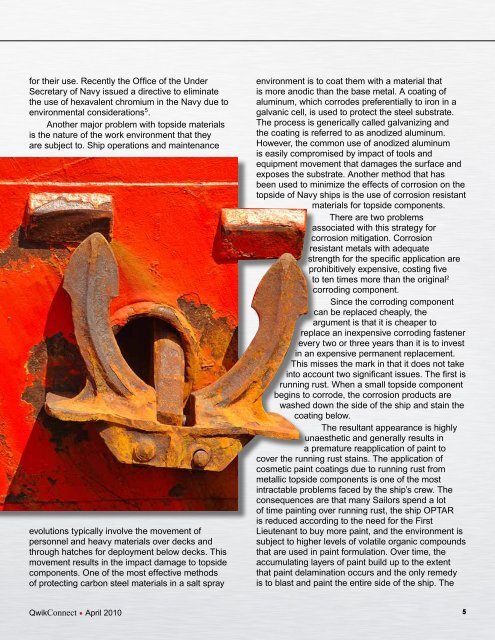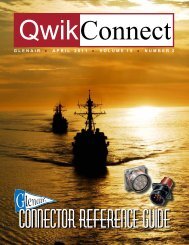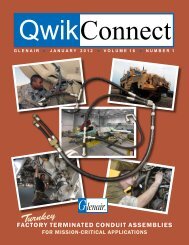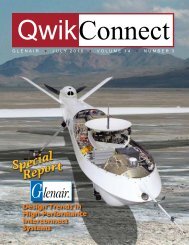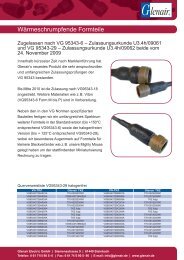April 2010 - Glenair, Inc.
April 2010 - Glenair, Inc.
April 2010 - Glenair, Inc.
Create successful ePaper yourself
Turn your PDF publications into a flip-book with our unique Google optimized e-Paper software.
for their use. Recently the Office of the Under<br />
Secretary of Navy issued a directive to eliminate<br />
the use of hexavalent chromium in the Navy due to<br />
environmental considerations 5 .<br />
Another major problem with topside materials<br />
is the nature of the work environment that they<br />
are subject to. Ship operations and maintenance<br />
evolutions typically involve the movement of<br />
personnel and heavy materials over decks and<br />
through hatches for deployment below decks. This<br />
movement results in the impact damage to topside<br />
components. One of the most effective methods<br />
of protecting carbon steel materials in a salt spray<br />
QwikConnect n <strong>April</strong> <strong>2010</strong><br />
environment is to coat them with a material that<br />
is more anodic than the base metal. A coating of<br />
aluminum, which corrodes preferentially to iron in a<br />
galvanic cell, is used to protect the steel substrate.<br />
The process is generically called galvanizing and<br />
the coating is referred to as anodized aluminum.<br />
However, the common use of anodized aluminum<br />
is easily compromised by impact of tools and<br />
equipment movement that damages the surface and<br />
exposes the substrate. Another method that has<br />
been used to minimize the effects of corrosion on the<br />
topside of Navy ships is the use of corrosion resistant<br />
materials for topside components.<br />
There are two problems<br />
associated with this strategy for<br />
corrosion mitigation. Corrosion<br />
resistant metals with adequate<br />
strength for the specific application are<br />
prohibitively expensive, costing five<br />
to ten times more than the original 2<br />
corroding component.<br />
Since the corroding component<br />
can be replaced cheaply, the<br />
argument is that it is cheaper to<br />
replace an inexpensive corroding fastener<br />
every two or three years than it is to invest<br />
in an expensive permanent replacement.<br />
This misses the mark in that it does not take<br />
into account two significant issues. The first is<br />
running rust. When a small topside component<br />
begins to corrode, the corrosion products are<br />
washed down the side of the ship and stain the<br />
coating below.<br />
The resultant appearance is highly<br />
unaesthetic and generally results in<br />
a premature reapplication of paint to<br />
cover the running rust stains. The application of<br />
cosmetic paint coatings due to running rust from<br />
metallic topside components is one of the most<br />
intractable problems faced by the ship’s crew. The<br />
consequences are that many Sailors spend a lot<br />
of time painting over running rust, the ship OPTAR<br />
is reduced according to the need for the First<br />
Lieutenant to buy more paint, and the environment is<br />
subject to higher levels of volatile organic compounds<br />
that are used in paint formulation. Over time, the<br />
accumulating layers of paint build up to the extent<br />
that paint delamination occurs and the only remedy<br />
is to blast and paint the entire side of the ship. The<br />
5


